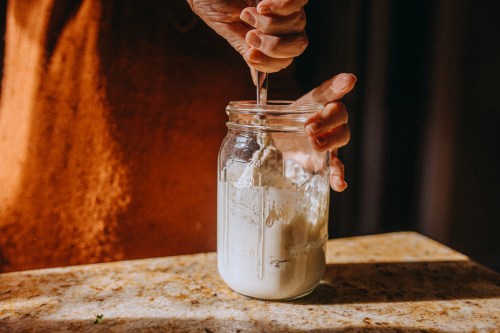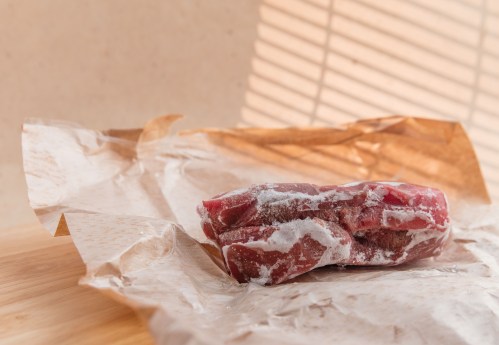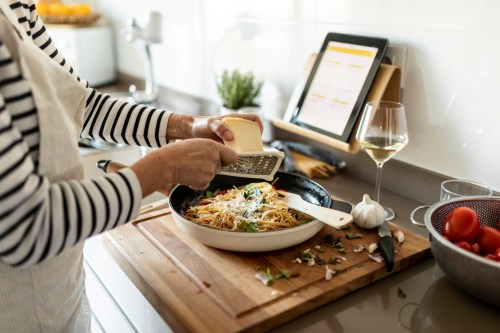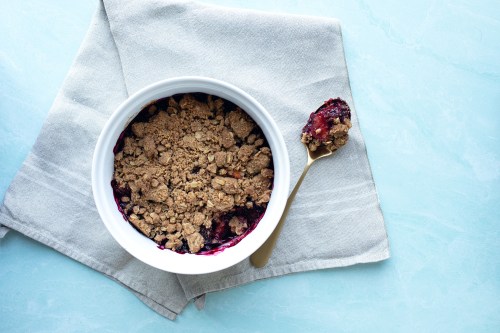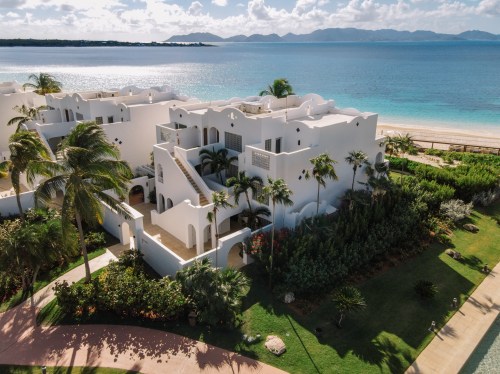Our editors independently select these products. Making a purchase through our links may earn Well+Good a commission
This Healthy Cooking Tool Adds Flavor to Everything You Make—and Is a Mainstay of Well+Good Staffers’ Kitchens
Two Well+Good editors share how to use a Himalayan salt block and why they love it so much. Plus, tips on how to clean it after using.

Himalayan salt is no stranger to wellness lovers, or even the wellness curious. The pink salt, which is mined in areas of the Himalayan mountains close to Pakistan, contains decent amounts of beneficial trace minerals that take it a step beyond regular old table salt. But even if you have a salt lamp in your bedroom, incorporate the pink salt into your cooking, or have hung out in a salt cave, it can be intimidating to know what to do with a Himalayan salt block, aka a large slab of the mineral shaped like a rectangular cutting board.
Himalayan salt blocks have reportedly been used for cooking since at least the 16th century, (and the first known discovery of the salt itself dates back to at least the fourth century) but only within the last decade have they been adopted for cooking in the United States. In the time since they’ve become popular stateside, I’ve personally always considered the blocks to be for Serious Chefs—certainly not amateur ones like me who would have no idea how to even use it. But when not one, but two, fellow Well+Good staffers told me how much they use their Himalayan salt blocks, I had to rethink my opinion.
“I use it all the time, especially with seafood and thinly sliced vegetables,” Jamie Thilman, Well+Good’s senior news editor told me. The benefit to using a Himalayan salt block is that it’s rich in minerals, including potassium, magnesium, and calcium, while giving whatever you cook on it a satisfying, salty flavor. Nora Grenfell, Well+Good’s senior director of audience development says that, like Thilman, she uses her salt block primarily for seafood, too. But besides seafood and veggies, you can also use it for cooking meat.
“I usually put mine directly on the gas burner for about 30 minutes, until it’s piping hot,” Thilman says. Then turn place your food on top and let it cook until desired doneness, turning occasionally to cook evenly like you would on a grill. “I find this method is best for searing shrimp or scallops, but I’ve also cooked a swordfish steak on it. It also works well with vegetable skewers stacked with tomatoes, onion, mushroom, artichoke hearts, zucchini—you name it!” Grenfell says you can also use the block on a charcoal grill, too—just bring it up to temperature slowly to avoid cracking and splitting of your block.
To wash the salt block, simply clean with a coir brush with warm water. Don’t soak the block or submerge it in water—just make the coir brush itself damp for optimal scrubbing. Then pat dry and let it air-dry before using again. Because Himalayan salt is antibacterial by nature, you don’t need to use soap. They should last you for several months of cooking if you take care of it well.
Here are three Himalayan salt blocks to consider, if you’re interested in purchasing one:
1. UMAID NATURAL HIMALAYAN ROCK SALT BLOCK ($39.99)
This salt block comes with a metal steel tray with handles, making it easy to take on and off the stove safely. It’s also big enough to fit seafood or meat on it for a whole table’s full of people.
2. HIMALAYAN CHEF PINK SALT COOKING PLATE ($38.01)
Since it’s split in two, this one is a good one for if you want to safely cook veggies at the same time as meat or seafood.
3. CHARCOAL COMPANION HIMALAYAN SALT PLATE ($25.56)
If you’re cooking for a group of four, this set could come in handy: there’s a plate for each person, so you can cook and serve each dish based on individual preferences.
